Robert Shelton and David Gahr: The Face of Folk Music.
New York: Citadel Press, 1968. 372 pages.
This huge, 10-pound book is comprised of an essay by Shelton on the
nature and evolution of folk music in the U.S. from the early ethnomusicologists
to the folk-pop of 1967, accompanied by over 500 photos by David Gahr. The
photos are really the main attraction here. Gahr was the pre-eminent
photographer of the folk music scene of the sixties, and was influential in
his use of natural lighting. Included are many photos of obscure folk figures
that you'd be hard-pressed to find elsewhere, as well as many unfamiliar
photos of the bigger stars. The
text itself, without the pictures, would probably only take up about 20 or 30
pages, and makes a good short introduction to folk music.
There is only one mention of Richard Fariña and none of Mimi, but there are
several priceless pictures (you can look them up in the index), some of
which have since become familiar, and others that don't appear anywhere else.
Shelton mentions Richard
in the context of the emergence of folk-rock and its resistance by the
folk purists:
The white blues performers were still fighting a kind of rear-guard action
against those folk purists who again felt that Negro music should only be
performed by Negro singers. Despite this, John Hammond, John Koerner, Tony
Glover, Dave Ray, Fred Neil, Tim Hardin and others were forging a new and
more meaningful music of their own, however much it owed to Negro blues.
Soon, folk rock at the hands of such a strong innovator as the late Richard
Fariña was building a compelling new music out of the old. The simple
standards of what a city folk music "should be" were being assaulted by the
magic imaginations of the folk-derived musicians, who thought only in terms
of what a modern pop-folk idiom "could be."
|
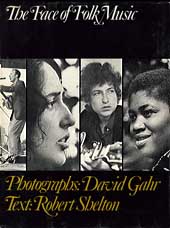 |
Pete Seeger: The Incompleat Folksinger.
Edited by Jo Metcalf Schwartz. New York: Simon and Schuster, 1973. 596 pages.
This compendium of Seeger's writings contains one brief reference to Richard
and Mimi from 1967 (p. 296):
Add unforgettable occasions: when the cloudburst opened up on six thousand
people at the Newport Folk Festival, 1965. They were in the middle of listening
to Mimi and Dick Fariña. Not a soul scurried for shelter. The music kept on,
hotter and stronger. Some in the audience started stripping, and dancing in
the downpour. The number was over. Everyone, soaked to the skin, was
hollering for more, on their feet, clapping, stamping, dancing, as the
dulcimer and guitar started up again."
|
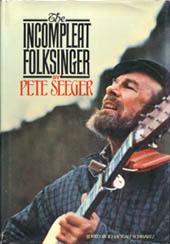 |
Jean Ritchie: Jean Ritchie's Dulcimer People.
New York: Oak Publications, 1975. 128 pages.
Long before there was Richard Fariña, there was Jean Ritchie, the Kentucky singer
and dulcimer player whose family has preserved folk traditions for generations.
The family is most famous for preserving the song, "Nottamun Town," the British
ballad that fell out of knowledge in England and was believed to be
irretrievably lost, but unbeknownst to the British it survived in the U.S.
Here is what Jean Ritchie has to say about Fariña in her book, on page 14:
One innovator who caught the fancy of the Newport festival-goers, and people
all over the country, was Richard Fariña in 1965, playing and
singing at the dulcimer workshop with his new bride, Mimi, whom he had
recently met and married in France, shortly after the break-up of his first
marriage. I had met him first in the early fifties. My friend Diane Hamilton,
founder of the Tradition Record Company, had invited George and me to a party
at her house in New York City. A new folksinger was present, Carolyn Hester,
with her husband Dick Fariña who was at that time a magazine writer. He seemed
very shy, but got quite excited about our dulcimer, examining it and trying
a few strums on it, saying he would like to learn to play one. Later on,
while visiting Paul Clayton in Virginia, he listened to and played dulcimers
with Paul, A.W. Jeffries and their neighbors, and his own unique style
evolved.
Richard Fariña was born on the high seas between Cuba and New York, and he
died in a motorcycle accident on May 1, 1966, in California.
His use of the dulcimer with the new music of his time--his own songs and
those of other contemporaries, captured the attention of a whole new segment
of the population, and the thousands of young followers of the folk-pop idols
in the Big Festival Era of the 1960's.
Note that this is one of the few references to the dulcimer workshop that
Richard and Mimi attended on Saturday, the day before their more well-known
rainy concert at the "New Folks" portion of the festival on Sunday afternoon.
There are a couple of errors in Ritchie's account: She must have meant to
say early sixties rather than early fifties, since Fariña and Carolyn Hester
married in 1960. Also, Fariña died on April 30, not May 1st. (I've seen this
error in a couple of places, and I suspect it derives from the poster on the
back of Memories announcing an autograph party at Discovery Bookshop
on May 1st. However, the autograph party Fariña attended on the day of his
death was on April 30, at the Thunderbird bookstore.)
|
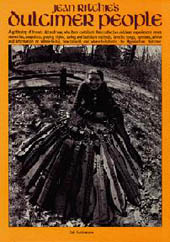 |
Jacque Vassal: Electric Children: Roots and Branches of Modern Folkrock.
New York: Taplinger, 1976. 270 pages. Translated from the French by Paul Barnett.
For a French guy, Vassal sure knows his Anglo-American folk music. This remarkably
thorough survey covers the ancient ballad tradition, the African and Native American
strains of U.S. folk, the rise of protest music in the early 20th century,
Guthrie, Dylan, the Urban Folk Revival, and folk rock. This was the first book
I ever read on folk music and the first I had ever heard of Richard and Mimi
Fariña. It only has two important paragraphs on Fariña, which I
include here (p. 181-2):
Immediately behind Bob Dylan, without whom, one must yet again repeat, this
evolution would have taken place years later if at all, Richard Fariña was one
of the first to work in the direction of the unification of folk and rock.
Poet, novelist, essayist, and even sometimes journalist, he had long been attached
to the folk revival; we have already mentioned him while speaking of Judy Collins.
He was married to Mimi Baez, sister of Joan and herself a singer, with whom
he toured Europe in 1963 in the company of Eric von Schmidt. The poetic
sensibilities of Richard Fariña, allied with his pronounced relish for traditional music
(his dulcimer-playing was fantastic), naturally pushed him into becoming a songwriter.
Active in bringing other young artists (such as Mark Spoelstra) to the notice
of the public while he was living in California, Richard Fariña did not forget to let his
own light shine clear and in 1965 released an album, in company with his wife, that is
absolutely packed with good things, under the symbolic title of Celebrations
for a Grey Day. The other recordings and compositions that followed, such as
Reflections in a Crystal Wind or "Hard Lovin' Loser," showed that
Richard Fariña was assured of a great future as the creator of a form of
pop music that was particularly original. Unfortunately, he never had time
to be more than an illustrious pioneer: in the summer of 1966 he was killed in
a motorcycle accident: exactly the death that he had predicted, by a tragic
irony, for his friend Bob Dylan. Albums by Richard and Mimi Fariña are almost
impossible to obtain nowadays, which is one of the tragedies of folkrock.
|
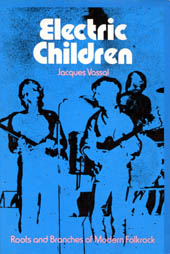 |
Vivian Claire: Judy Collins.
New York: Flash Books, 1977. 78 pages.
This slim biography of Judy Collins mentions Richard on pages 47 and 48 in
connection with his contribution to her Fifth Album.
There is also a nice picture of Mimi at the 1967
Big Sur Festival on page 23 (by Jim Miller). On page 74, there is a picture of Judy, Joan Baez, and
someone playing an autoharp who looks an awful lot like Mimi. But it isn't! It's
the "other" Baez sister, Pauline.
|
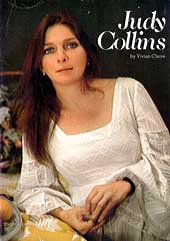 |
Joellen Lapidus: Lapidus on Dulcimer.
Almo Publications, 1978. 228 pages.
Dulcimer player and builder Joellen Lapidus tells in
the biography section of her book how Richard inspired
her to move to California and start building dulcimers
(p. 225-26):
Next came the 1965 Newport Folk Festival and Jean
Ritchie and Richard Fariña. The guy I hitchhiked with
knew Pete Seeger and we got in for free, and then
stood around the hotel where we got to see up close:
Bob Dylan in a polka-dt shirt, Donovan in sunglasses
and jeans, Mary Travers by the pool, and Joan Baez
running across the parking lot. I was impressed.
Anyone in 1965 who listened to Richard and Mimi Fariña
in the rain and heard the dulcimer and that Arabic
drum and the celeste and Bruce Langhorne on guitar,
saw them dancing on stage and the audience not moving
in spite of the rain, heard and felt the birth of
contemporary dulcimer playing.
Richard Fariña died in a motorcycle crash, and soon I
was living in the East Village, working at
Bloomingdale's in the lingerie department, wearing a
bird's nest hairpiece and about to climb Mount
Washington. That's when I decided to leave for
California in search of the spirit of Richard's music.
...there I was in Big Sur, sitting on the same lawns and benches as
had Richard Fariña meeting people who had known him
and played music with him.
|
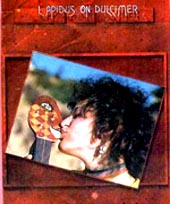 |
Davis, Judith: Richard Gere: An Unauthorized Biography.
Signet/New American Library, 1983. 190 pages.
Briefly discusses Richard Gere's role in the musical, Richard Fariña: Long
Time Coming and a Long Time Gone (p. 33-34). Unfortunately there are no
photos of him playing the role of Fariña.
|
|
Johnson, Steve, and Sheldon Oberman: The Folk Festival Book: The
stories of the Winnipeg Folk Festival.
Photos by David Landy. Turnstone Press, 1984. 138 pages.
Tells how Mimi and Randy Sabien "brought the house down in 1982 with a
surprise send-up of John Denver called "Thank God I'm a Millionaire." Mimi
is quoted:
"If you're a performer here and you're performing and partying, in other
words, staying up all night, you come back and perform again, the stress
factor is something like being in an EST seminar! You fall in; you lose
your defenses after a while, you simply have to succumb, cause you're too
tired to complain and there's so much good music."
The book also states that Mimi recorded at CBC-TV special at Stony
Mountain Penitentiary called "Stony Mountain Inn." I have found no
corroboration of this. There is also a quote from a fan:
"It was the first time I'd heard women's music. Mimi Farina was singing a
song called "Wanderlust." At first I was uncomfortable, because I have thought
it was a feeling women aren't supposed to have. It was only for men to
get up and go wandering. But she was singing it so proud and strong that
she made it alright to feel that way. She became a kind of model for me.
I had an image of what a woman could be that I'd never had before."
The book includes two photos of Mimi.
|
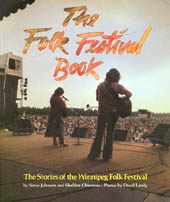 |
Robbie Woliver: Hoot! A 25-Year History of the Greenwich Village Music
Scene.
New York: St. Martin's Press, 1986. (Originally published as
Bringing It All Back Home.)
This is a fun book, comprised mostly of interviews and reminiscences
that evoke the excitement of the Village folk
scene in the 60s as recalled by dozens of musicians, club and coffee shop
owners, and wayfarers. A New York
counterpart to Baby, Let Me Follow You Down. Highly recommended. I'll
print the sections on Richard and Mimi, but only if you promise to read the whole book
later. Deal? Alrighty, then:
Dave Van Ronk:
New people were coming into the city constantly, and I think the change
in quality reflected that more than anything else. There were a lot of
good performers around, suddenly. Richard Fariña was a good performer.
I saw him with Carolyn Hester. I
saw Carolyn for the first time at Gerdes. My God, she tore the place apart.
Richard Fariña was doing a lot of dulcimer in those days. It was so funny to
see Dick, a hipster--I mean a real hipster--on stage with the shades, the
motorcycle jacket, and this delicate dulcimer. He did southern mountain tunes.
He didn't have a big voice, but he was a wonderful performer. (p. 50)
Carolyn Hester:
Richard Fariña and I met in January of '60. He was in the audience at Folk City.
It was one of those weeks when I was playing a full week, and he was sitting
at a table right in front of me and he followed me when I left after the first
set. And that was it--we were stuck together like glue. We got married in
two weeks. Now, if you want to talk about mistakes! I couldn't get rid of the
guy. He was going to follow me everywhere. It would be more convenient if
we got married, I decided.
He was a copywriter at J. Walter Thompson. At this point, he was about to give
up his job, because he wanted to start his book. He loved folk music very
much and he would sing at the drop of a hat.
A fellow named George Emerson made me a dulcimer, so I gave the dulcimer to
Richard and he started playing. We started playing together.
I went to England in 1962. At this point, we were singing together a lot more
and he began writing a lot more. He started to write songs and he was well
into his book.
We just had a lot of irreconcilable differences, I guess. We were very
different. We were crazy about each other, but couldn't live together.
His career hadn't really taken off at that point and it was a strain on me
because I earned all the money. It was a good time for me professionally.
I tried to encourage him to go ahead and keep on with the book and at the same
time, I was upset by the insecurity of it. It was very hard to earn your living
in the entertainment field, anyway. So, probably my being our total support
wasn't good for either one of us and our relationship.
In the end, I typed the first ninety pages of his book. I was getting calls
to come back to the States. There were a lot of jobs waiting. Richard was
very mad and he didn't want to go back to the United States without what he
called a victory.
And so, in the end, his victory was that he was going to marry Joan Baez's
sister.
She was very young. But she and I got along great, which I've always been very proud of.
Mimi and I have a lot in common. Certainly, we had an unusual role with each
other. And I appreciate our friendship.
The situation was very sad and I also felt it was detrimental to the music
and the movement. Someone said to me, "Carolyn, it's like Debbie Reynolds and
Elizabeth Taylor and Eddie Fisher." That did it. That made sense and it was
funny. It was silly, because I never thought of us having any relationship
that was like a Hollywood relationship. If it was not The Big Folk Scandal,
it was more or less one of the big ones of 1963. (p. 101-102)
|
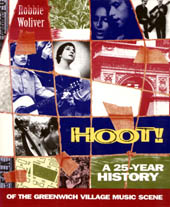 |
Robert Shelton, No Direction Home: The Life and Music of Bob Dylan.
William Morrow and Company, 1986. 662 pages.
This is considered one of the better biographies of Dylan, since Robert Shelton
was a friend of Dylan. He was also the one who first introduced Fariña to
Carolyn Hester. Nevertheless, the book gives the impression that Fariña was a
peripheral figure on the folk scene, even though Shelton himself reviewed the
Fariñas' albums very highly at the time and included one of them in his list
of best folk albums of 1965. This book includes a small excerpt from an
interview Shelton had with Fariña late in 1965. If only we could get those
transcripts!
|
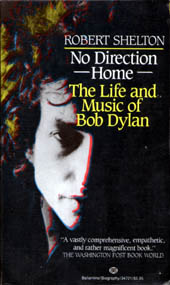 |
Judy Collins, Trust Your Heart.
Boston: Houghton Mifflin, 1987. 275 pages.
Judy
talks about her friendship with Richard and Mimi on pages 128-131, and her
tour in Japan with Mimi and Arlo Guthrie on pages 135-137. Richard or Mimi
are also mentioned very briefly on pages 81, 106, 148, 149, 226, 227, and 247. The section
of main interest, on pages 128-131, is too long to quote here, so I strongly
recommend reading it, or better yet, read the whole book, which describes Judy's epic journey
from the fifties to the eighties, with plenty of folk music history along the way.
There is a description of the
Baez family that I particularly liked (in a discussion of the Newport Reunion of 1985):
"In the dining room, the Baez family is at a
table looking as though they just stepped out of a Henry James novel. They have an
easy beauty that is not learned; they were born with it." Judy also recalls many other
friends--stars like John Lennon and Janis Joplin as well as lesser-known
musicians, such as David Blue and John Cooke. Judy wrote a second autobio in 1998,
Singing Lessons, which mentions the Fariñas intermittently.
|
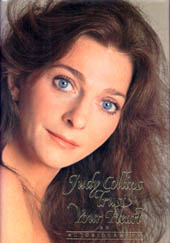 |
Eric Lefcowitz: Tomorrow Never Knows: The Beatles' Last Concert.
San Francisco: Terra Firma Books, 1987. 101 pages.
This short book has a few photos of Mimi, Joan, and Pauline visiting the Beatles
on their final concert date, August 29, 1966. There are quotes from Mimi
and Joan. Photos by Jim Marshall.
|
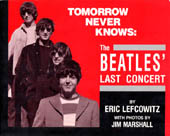 |
Bob Spitz: Dylan: A Biography.
New York: McGraw-Hill, 1989. 639 pages.
Spitz doesn't pull any punches in showing Dylan's mean-spirited side and his
"sick psychological games." He seems to like Richard Fariña, though, and his
descriptions
of him prefigure Hajdu's affectionate portrait. Also included is
Mimi's account of Dylan's invitation to Joan to join him for the Rolling
Thunder tour. One passage worth quoting:
Fariña had an eerie stage presence, like a sulking cat. He sang with obvious
feeling, but more interesting was the way he seemed to light a fire under his
wife [Carolyn Hester]. He was intense, penetrating, and when they collaborated,
Carolyn sang like a woman possessed. (p. 158)
Also, here are a couple of quotes from Eric Von Schmidt in the footnotes
that you might miss if you're not careful:
"Dick was Mr. Mystery. You could never tell how much of what he said was the
truth, how much he was making up on the spot, and how much he made up a few
blocks down the road." (p. 563)
"Underneath all the bullshit, Dylan and Fariña actually liked each other a
lot. When we got to smoking dope they'd get into a heavy rap and I'd feel
like I was missing the point half the time. They were on a real close
wavelength." (p. 569)
I must point out a couple of errors in this book. On page 345, Spitz reports,
"In April, Richard Fariña was decapitated in a motorcycle accident while on
the way home from a publication party for his book, Been Down So Long, It Looks
Like It's Up To Me." Hajdu says that Fariña was "badly mangled," but
to the best of my knowledge, he was not decapitated (though he probably would have
appreciated the Orphean symbolism). Also, he was not on his way home from the
publication party (actually an autograph party), but was in the midst of a
second party that day, for Mimi's birthday, when he went out for the motorcycle
ride.
|
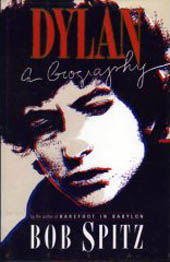 |
Robert Christgau: Christgau's Record Guide: Rock Albums of the '70s.
Ticknor and Fields, 1981. 472 pages.
This book has a capsule review of Take Heart, giving the album a grade of C:
I'm no necrologist, but the difference between Richard Farina, sharp-witted and
spirited even when he was throwing himself away, and Tom Jans, often pretty and
always inispid, is as telling an indictiment of the acoustic singer-songwriters
as I can offer. Mimi's muted burr still catches me up short sometimes, but this
is what I call decadent. [p. 131]
|
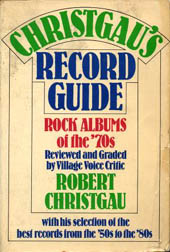 |
Jeffrey Heller: Joan Baez: Singer with a Cause.
Chicago: Children's Press, 1991. 108 pages.
This is a children's book, with no new info on Mimi, but it does have three photos
of her, which makes it worth mentioning here. One is the "funny faces" photo that
appeared in Joan's autobiography. Another shows Joan,
Judy Collins and Mimi at the 1985 Newport Folk Festival (this photo appeared in
the San Francisco Chronicle June 8, 1986). The third, which I've not seen
before, is
of Pauline, Joan and Mimi in 1949 or 1950--it looks like it must be a little
earlier than Baghdad.
|
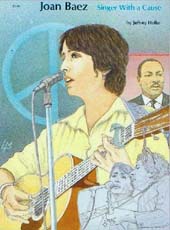 |
Peter Anderson and Cathy Shine: 100 Faces of Marin.
Anderson Publishing, 1991. 182 pages.
Includes a one-page profile of Mimi (by Anderson) on page 66, followed by a full-page
photo of Mimi (by Shine) in a leather jacket, with a mountain in the background.
|
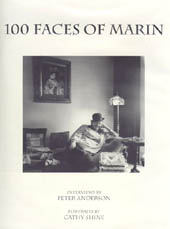 |
Brian Boyd: Vladimir Nabokov: The American Years.
Princeton University Press, 1991. 783 pages.
Boyd's mammoth, two-volume biography of the great Russian and American author
who inspired Fariña, Pynchon, and scores of other writers has a couple of very
brief references to Richard in this second volume. Since information on Fariña's Cornell years is
not as abundant as the "folk" years, these passages are worth quoting. The
first mention is in the chapter, "Lolita Sparks:"
A Nabokov cult developed among Cornell's ambitious young writers: the future
novelist Thomas Pynchon, science fiction writer Joanna Russ, novelist Richard
Fariña (Been Down So Long It Looks Like Up To Me), critic Roger Sale,
editor Michael Curtis. At Cornell's literary club, the Book and Bowl, Marc
Szeftel and Richard Fariña read from Lolita, which Szeftel then placed
in the context of Nabokov's Russian oeuvre. (page 316)
And in the chapter "Lolita Explodes:"
Richard Fariña and other young Cornell literati wanted to interview Nabokov
for a campus magazine, the Trojan Horse, but James McConkey and
Baxter Hathaway of Cornell's English department, neither enamored of Nabokov,
opposed the idea. (page 368)
|
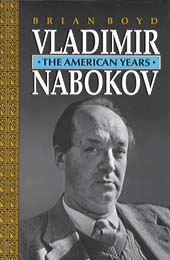 |
Ellis Amburn: Pearl: The Obsessions and Passions of Janis Joplin.
New York: Warner Books, 1992. 340 pages.
This book has some info on Mimi:
In San Francisco, Mimi met and fell in love with Milan. She started writing new songs,
and soon her depression began to lift. "Mimi gave me the nicest verbal valentine
once," says Linda Gravenites. "I'd just brought her a blouse of ecru-colored, silk
crepe-backed satin, embroidered with antique red glass beads. She put it on,
looked in the mirror, and said, 'Oh, Linda, it's me as I've always dreamed of
being!'"
When Mimi and Milan decided to get married, Mimi went to Linda Gravenites and asked her
to design and make her wedding dress. Mimi had also become friendly with another of
Janis' friends, Linda Wauldon, who'd roomed with Janis back in 1963 to 1964. It
must have seemed to Janis that Mimi Farina was appropriating not only her lover
but all her girlfriends as well.
"Janis and Linda Wauldron were very tight friends and continued close all the way through,"
Linda Gravenites says. "Around this time, Linda Wauldron came back from Hawaii and
was living in Santa Cruz. She and Janis were hanging out together when I was working
on Mimi Farina's dress, which, by the way, was appliquéd lace, with a beaded lace
train. When Janis heard that Mimi and Milan Melvin were getting married, she yelled,
'Marry my boyfriend??!! And Linda Wauldron, humph, some friend! Hanging out with
Mimi Farina! And you--doing her wedding dress!'"
At the wedding, which was held during the Big Sur Folk Festival, Milan wore a velvet
suit, his long, lustrous black hair cascading over his shoulders, and Mimi, lovely
in her white Linda Gravenites, wore a crown of daisies. The sight of the bridal
pair inspired "Sweet Sir Galahad," the first song Joan Baez composed.
While Janis nursed a broken heart, Milan and Mimi moved into his apartment atop
Telegraph Hill. Mimi began to grow as a person in ways that she had never been
able to with the willful Richard Farina.... However, the marriage ended in divorce
after three years, and Milan was soon back in Janis' life, though not as before.
(Other sources say they were only married two years.) The author also notes that
Milan and Mimi were living at Filbert's Steps in North Beach in
the spring of 1970 when Kris Kristofferson stayed with them a couple times.
|
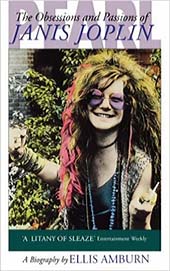 |
Herbert Gold: Bohemia: Where Art, Angst, Love, and Strong Coffee Meet.
New York: Simon & Schuster, 1993. 253 pages.
Herbert Gold was the professor who replaced Nabokov at Cornell when the Russian
author's success alleviated him of his academic duties. Hajdu tells us that
Fariña was interested in getting advice from Gold as a writer, but that Gold was
not fond of Fariña. Here is what Gold says of him in his memoir/history of the
Beatnik/Bohemian scene:
A young woman fresh out of Cornell into Noho, Manhattan, complained of being labeled
a beatnik "just because I wear black, dye my hair green, smoke and listen to progressive
rap....They didn't call Richard Fariña a beatnik."
Oh yes they did. Beatniks liked to be called beatniks in those days. In 1991 the
Cornell Alumni News published an article about Fariña, author of Been
Down So Long It Looks Like Up To Me, describing him as "the coolest Cornellian
ever?"--with a question mark--because he wrote that book, lived in Collegetown, married several folk singers,
died in a motorcycle accident upon publication of his first novel. Dick Fariña was
proud to be a writer, a beatnik and a composer of songs for Joan Baez and his wife,
Mimi. He also claimed to have fought alongside both Fidel Castro and the Irish
Republican Army during his summer vacations from Cornell. And later he really did
hang out in Village bars with Delmore Schwartz. If his novel had shown more talent,
he might indeed have been the coolest Cornellian ever. James Dean and Jack Kerouac
didn't attend Cornell. (p. 249)
[Note: Delmore Schwartz (b. 1913) was a poet and short story writer. Like Fariña
he was born in Brooklyn, and like Fariña he died in 1966.]
|
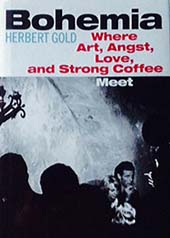 |
Theodore Bikel: Theo: The Autobiography of Theodore Bikel.
New York: Harper Collins, 1994.
This has a passage on the Newport Folk Festival that is worth quoting: (page 183)
At the Sunday-afternoon events, which were billed as "New Folks" concerts,
you could hear such new voices as James Taylor in the year of his emergence
as a singer-songwriter. At one of these afternoons an incredible event
occurred. Just as Richard Fariña and his wife, Mimi, had started to sing,
a monumental downpour began to drench the audience. Normally this would
cause everyone to run for shelter. Not this time, though; people stood,
laughed, sang, and clapped, strangers embracing each other. This must have
been the forerunner of the love-in at Woodstock.
|
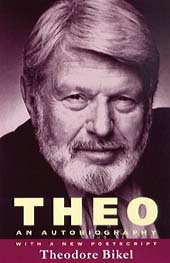 |
Peter Carrick: Richard Gere.
London: Robert Hale, 1996. 187 pages.
Briefly discusses Gere's role in the musical, Richard Fariña:
Long Time Coming and a Long Time Gone (pages 31-32). No photos of Gere
playing the role of Fariña.
|
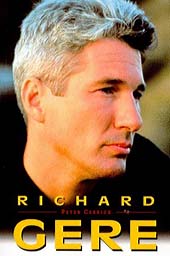 |
Alice Echols: Scars of Sweet Paradise: The Life and Times of Janis Joplin.
New York: Metropolitan Books / Henry Holt, 1999. 408 pages.
This book covers some of the same info on Mimi as the other Janis bio listed above.
A "Where are they Now?"
section at the end of the book gives some further info on Melvin (after he separated
from Mimi he moved to England in the summer of 1970 and worked on the concert film
Medicine Ball Caravan. He produced a few records in the seventies, then
lived in Mexico as a scuba diver instructor). There is also
info on Albert Grossman, John Cooke, Kim Chappell, and other people who
intersected with the Fariñas. An excellent book for background on the era, written
by a professor of sixties history.
|
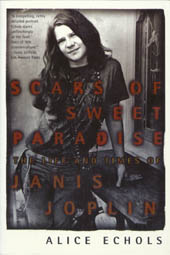 |
Jac Holzman, Follow the Music: The Life and High Times of Elektra Records
in the Great Years of American Pop Culture.
First Media Books, 2000. 441 pages.
Jac Holzman remembers Richard and Mimi thus:
At Esalen on Big Sur, Nina and I would spend time with our friends Richard Fariña
and his wife Mimi, Joan Baez's siser. We had met at Newport, and when they visited
New York they would often stay with us, bringing their dog Lush, ferociously large
but mild-mannered due to his vegetarian diet, a true Sixties counter-culture canine.
Mimi did not get loaded, but Richard was always going into small rooms by himself
or with friends, and you knew what was up. [p. 125]
|
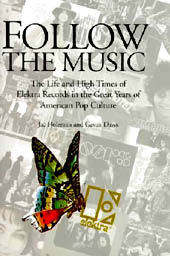 |
Paul Williams: The 20th Century's Greatest Hits: A Top 40 List.
New York: Forge / Tom Doherty Associates, 2000. 304 pages.
A delightfully idiosyncratic list of 40 literary, musical and artistic "hits"
of the century by the famous founder of Crawdaddy magazine. Fariña's novel
is mentioned briefly in the section on Winnie the Pooh.
|
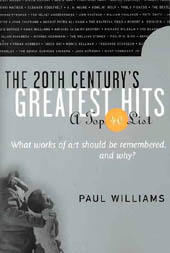 |
Liam Clancy: The Mountain of the Women: Memoirs of an Irish Troubadour.
New York: Doubleday, 2002. 294 pages.
A couple of very brief references to Richard are in this book:
When Liam Clancy was working
at Tradition Records in New York he and his wife would
go the White Horse Tavern in Greenwich Village. "Our
close friend, Richard Farina, the
poet/singer/revolutionary, was a regular." (p. 202).
And elsewhere:
For us, the White Horse Tavern was the poetic,
singing center of the Village. In 1953, Dylan Thomas
had taken his last drink there, or rather his last
thirty-six drinks. Legend has it that the Welsh poet,
overwhelmed by fame, took refuge in the longshoreman's
bar on Hudson Street. The doctors told him that even
one more whiskey would do in his liver, so he set up a
pyramid of thirty-six shot glasses of whiskey on the
counter of the White Horse bar. He looked a long time
at the pyramid, contemplating. Then he took the top
shot glass off the pile, downed it, and with suicidal
certainty drank glass after glass until the pyramid
was demolished.
He was rushed to St. Vincent's Hospital a few blocks
away but never recovered consciousness. In the end he
did go gentle into that good night.
Crowds of students would come on weekends to worship
at the shrine. We, the locals, resented the invasion.
This was our sanctuary: the back room was our singing
place, the place where sea shanties, rebel songs, and
raw love songs were exposed. This was where Theo Bikel
could cry over the beauty of his Old Testament
recitals, where Richard Farina could hold forth with
snatches of his novel in progress, where Jimmy Baldwin
could flaunt his homosexual intellectualism and snort
scornfully at our ballsy shanties, and where the old
bawd, sleeping at the next table, could rise from her
stupor--tangle-haired and bleary-eyed--and demand,
"What the fuck goes on here?" (p. 250-51)
Richard mentions Dylan Thomas and the
White Horse Tavern in the notes to the Singer Songwriter
Project and implies that he met him. Richard would have been a high school
junior when Thomas died on November 9, 1953. Richard had recently returned from
a two-month trip to England and Ireland on September 15th, so it's
possible, if not terribly probable, that the precocious Fariña had learned
that Thomas was in New York and, still excited by his ancestral voyages in the
British Isles, went to see him before he died.
The Clancy Brothers also talked about Richard in an interview in Telegraph
magazine in 1984. Click here to read an
excerpt.
|
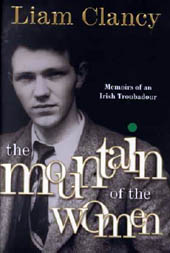
|
Richie Unterberger, Turn! Turn! Turn! The '60s Folk-Rock Revolution.
San Francisco: Backbeat Books, May, 2002. 303 pages.
A detailed history of the transition from folk to folk-rock, covering not only the
"stars" who have garnered the lion's share of the credit but also
dozens of lesser-known artists, as well as artists not usually classified as
folk but
who waded in its waters during the height of the folk boom. The book also
considers the roles of behind-the-scenes people--managers, producers, studio
session players and even coffee house and club owners--who lent a hand to the
changing times. There are about six pages on the Fariñas, as well as a few
very brief references scattered throughout. We find only a couple of completely
new items on either Richard or Mimi, notably a comment by Bruce Langhorne,
who
reports that it was he and Richard who broke up the legendary fight between Alan
Lomax and Al Grossman at the 1965 Newport Folk Festival. There is, however,
a goldmine of information on other artists. You'll find yourself scribbling
frantic shopping lists as you read, and running to the record store and onto the
Web in search of the many elusive songs, albums, and artists
tantalizingly described here. The discussion of Dylan's electric set, already well
covered in Positively 4th Street, is examined more thoroughly here,
providing more eye-witness
accounts than I've seen in any other book. Like Hajdu's book, this one ends
with Dylan's 1966 motorcycle accident, but fortunately there is a sequel on the way
which will chronicle the further evolution of folk-rock in the later sixties.
NOTE: Because of the depth of detail in this book, the index does not cover every
single reference. Brief references to Richard and Mimi not included in the index are on
pages 135, 163, 171, 191, 211, and 241. They're just minor mentions, listed here
for the sake of completeness.
|
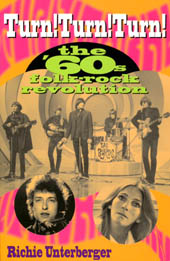
|
Ed Morales: The Latin Beat: The Rhythms and Roots of Latin Music from
Bossa Nova to Salsa and Beyond.
Da Capo Press, 2003. 372 pages.
In a chapter titled "The Hidden History of Latinos and Latin Influence in
Rock and Hip-hop," the author writes:
One important branch of 1960s pop that wound up strongly influencing both
psychedelia and folk-rock was the folk movement of Greenwich Village cafes in
the early 1960s. The scene that produced singers like Bob Dylan was profoundly
influenced by a married couple, Richard and Mimi Fariña, both of whom had partial
Hispanic roots. Richard was the son of a Cuban immigrant and an Irish woman, and
Mimi, who was the sister of singer and one-time Dylan romantic partner Joan Baez,
had Mexican and Scottish parents. While there may not be strongly apparent Latin
influences in their music, their compositional style, which they developed
together in 1964, was polyrhythmic and featured improvisation between guitar and
dulcimer, characteristics that allude to the Hispano-Arabic roots of Latino
cultures. A 1971 Rolling Stone article quoted Rolling Stone member Brian Jones
as saying that his use of the dulcimer in the hit single Lady Jane was
inspired by Fariña.
|
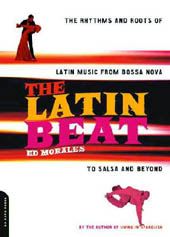 |
Bob Coltman: Paul Clayton and the Folksong Revival.
Scarecrow Press, 2008. 296 pages.
An excellent, in-depth biography of folksong collector and performer Paul Clayton, who
recorded 17 albums from 1954 to 1965, including 1957's Dulcimer Songs and Solos.
He was friends with Dave Van Ronk and an early mentor to Bob Dylan. Despite Clayton's
early success, he was unable
to adapt to the folk-rock transition, and was deeply upset by Dylan's theft of his song
"Who'll Buy Your Ribbons" for his "Don't Think Twice, It's All Right." Tormented by Dylan's
betrayal and by his own homosexuality in the pre-Stonewall era, Paul Clayton committed
suicide in March, 1967.
Fariña and Carolyn Hester met Paul at the Showboat Lounge in Washington, DC, when Carolyn
was hosting the Sunday Folk Nite there, and they later visited Paul in his log cabin in
the mountains outside Charlottesville, VA. Author Bob Coltman (a folksinger in his own right
and contributor to various traditional music magazines) considers the possibility that
Paul taught Fariña some dulcimer, but Carolyn says, "I have no memory of Paul teaching him
at all." (p. 177) He surmises that "At most, Richard may have been intrigued by Clayton's
gigging with a dulcimer as he brainstormed how to use the instrument in the emerging folk-pop
style." (177). He also writes that Richard "was far more like a scion of Paul than Paul
would have realized: talented, cynical, funny, a bit of a con man, head blazing like a
torch toward transcendence." (178) Unfortunately, their friendship is not well-documented
outside these two passages, and there is no indication of whether they spent time together
in New York City, where Paul lived on-and-off when not in Charlottesville. But if the
answer were out there, Coltman would have included it. The book has loads of unique
information on the early years of the folk revival before it exploded into the folk
boom of the sixties. Highly recommended.
|
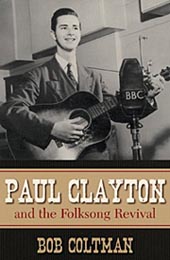
|
Paul Trynka: Brian Jones: The Making of a Rolling Stone.
Viking, 2014. 370 pages.
"Yet whenever there was a chance of picking up new information or new ideas, Brian was fearless, 'like a scout searching
out new sources or new influences,' says Berman [Tosh Berman, son of the California artist Wallace Berman, a friend
of Brian's]. Keith would sometimes tag along on such expeditions, Tosh remembers,
but would remain quiet; Brian was the one making connections. One typical example was Richard and Mimi Farina, whom he
met several times towards the end of 1965 - their explorations of stripped-down Appalachian music inspired Brian's
purchase of a dulcimer." p. 184-185.
|
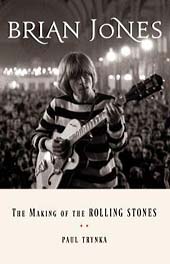 |



























